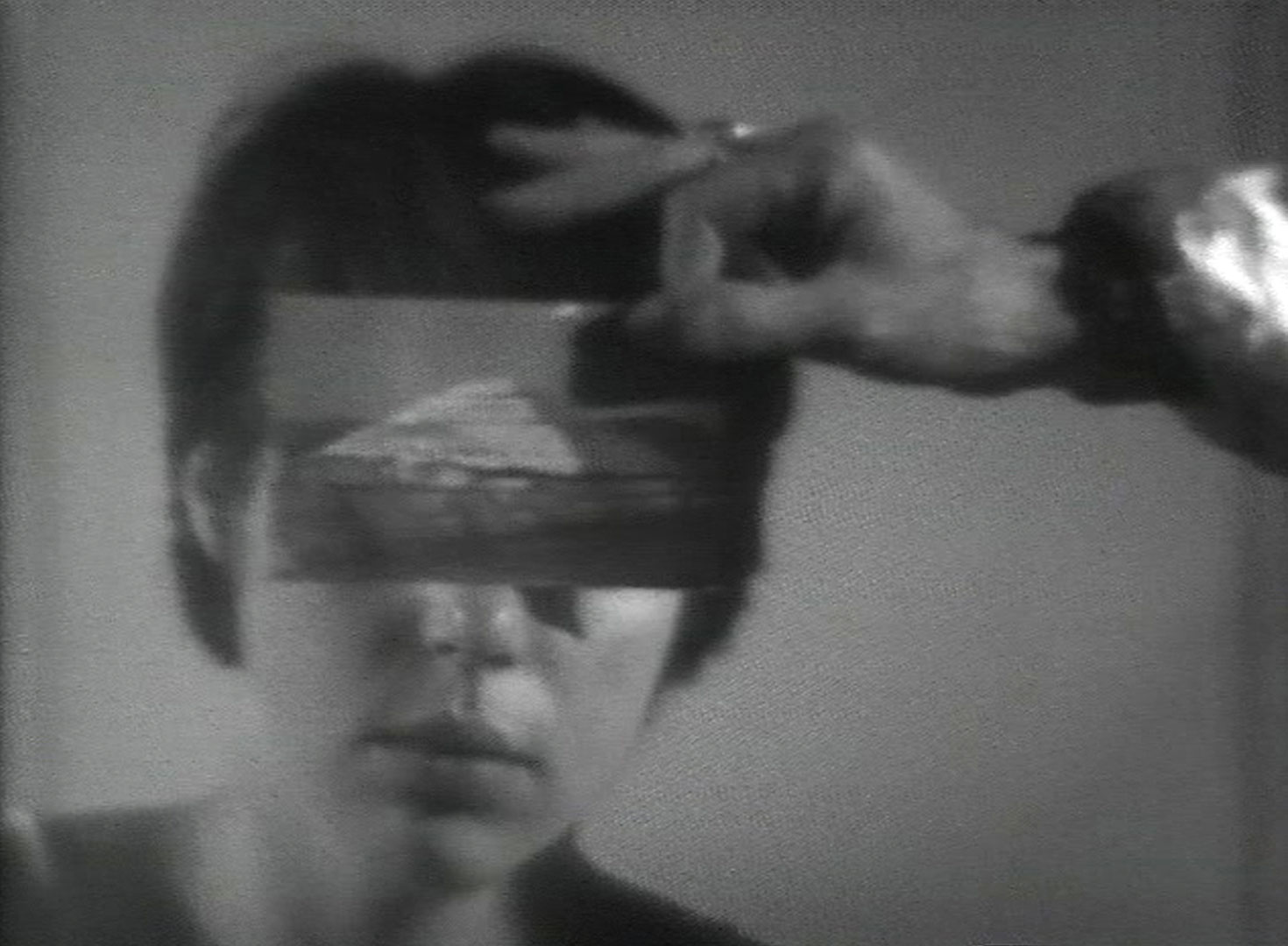October 11, 2015
8:00pm
@ First Street Studio
2400 East Cesar Chavez Street, Austin, TX 78702 (map)
Admission: $7 ($5 w/student ID)
This program samples the film and video art of acclaimed multimedia artist Joan Jonas, currently representing the United States at the 56th Venice Art Biennale. Featured here are Jonas’s experiments with mirroring, ritual and lyrical narrative. Don’t miss this rare opportunity to see her work! Introduced by Robin Kathleen Williams. Programmed by Jennifer Stob and Robin Kathleen Williams.
Songdelay 1973, 18:35 min, b&w, sound, 16 mm film on video.
This 1973 black-and-white film is a rediscovered classic. Performing with a “cast” that includes Gordon Matta-Clark, Jonas choreographs a theater of space, movement, and sound, with the urban landscape of New York in a featured role. Jonas creates a highly original if enigmatic theatrical language of gesture and sound, as she and her performers play with emblematic props, unexpected rhythms of space and scale, references to painting, and audio delays. At once delightfully improvisational and precisely choreographed, Song Delay resonates with themes and strategies that recur throughout Jonas’ performance work.
Disturbances 1974, 11 min, b&w, sound, video.
Disturbances extends Jonas’ investigation of mirrored surfaces and spaces, as she explores reflections of movement and images in water. The tape begins with Jonas, like Narcissus, leaning over a reflecting pool. Throughout this lyrical exercise, the viewer sees only reflected images and inversions, disturbances of the water’s surface. Figures walking at the edge of the pool are seen as abstracted shimmers, upside down and backwards; shadowy figures move underwater and swim through the pool as in a choreographed dance. This simply rendered, evocative work is a phenomenological study of reflection, as Jonas draws a parallel between the spatial and mirroring effects of water and video.
Glass Puzzle 1973, 17:27 min, b&w, sound, video.
This complex and enigmatic work, which is performed by Jonas and Lois Lane, explores female gestures, poses, the body and narcissism. Mirroring each other with synchronized movements as they perform as alter-egos, Jonas and Lane reference archetypal female gestures and poses from popular and traditional cultures. Throughout the performance, space is dislocated and altered as a formal device — segmented by a swinging bar, superimposed in layers, transformed by subtle changes in light and shadow, or flattened by the video screen. With its evocative personal theater and idiosyncratic vocabulary of gestures, ritual and symbolism, Glass Puzzle is a quintessential Jonas work.
Good Night Good Morning 1976, 11:38 min, b&w, sound, video.
In Good Night Good Morning, Jonas uses video as a diaristic construct to chart the passing of personal time through quotidian ritual. Over three different periods in New York and Nova Scotia, she videotaped herself every day, briefly addressing the camera upon waking in the morning and before going to bed at night: “Good Morning.” “Good Night.” This journal evolves into a self-portrait that is at once distanced and intimate, public and private. Observing herself as the viewer observes her, Jonas addresses the mirror of video as a vehicle for monitoring identity and change in time. Though her minimalist adherence to a controlled system of documentation is a rigorous conceptual conceit, Jonas’ repetitive salutations are performed with more than a touch of irony. This tape was designed to be viewed on a monitor set on its side, which recreates a mirror-like space.
I Want to Live in the Country (And Other Romances) 1976, 24:06 min, color, sound, video.
Loss, displacement, time and memory permeate this haunting nonlinear narrative, which unfolds like a dream in the process of telling itself. Jonas is seen watching video images — shot in a New York studio and in rural Nova Scotia — that metaphorically relate to the dreams, reveries and memories that she is heard reading from her journal. The studio space, which is filled with complex “still life” compositions of archetypal objects, is intercut with Super-8 film footage that nostalgically evokes the quotidian rhythm of the country — the pastoral Nova Scotia landscape, the ocean, a farmhouse. Throughout, Jonas constructs a layered formal structure of time and space, a theater of mediation that reveals frames within frames, monitors within monitors. The poetic journal text and images represent conscious memory; I Want to Live in the Country is a story of the unconscious.
*All title descriptions from the Electronic Arts Intermix catalog.
